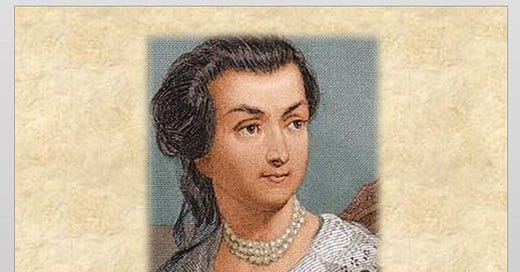TDIH: The Second Continental Congress
Armed conflict between Great Britain and her colonies had broken out mere weeks earlier at Lexington and Concord.
On this day in 1775, delegates from the American colonies convene in a Continental Congress. It was badly needed. Armed conflict between Great Britain and her colonies had broken out mere weeks earlier at Lexington and Concord.
This Congress was the second one of its kind. The First Continental Congress (1774) had accomplished several objectives, including a petition to the King and a planned boycott of British goods if the Intolerable Acts were not repealed. The colonists still blamed Parliament more than they blamed the King. They hoped that a direct appeal to him would bring about a reconciliation with Great Britain.
Unfortunately, the King didn’t share the colonists’ perspective. He responded badly to the petition. In fact, he delivered a rather scathing response. He told Parliament that “a most daring spirit of resistance, and disobedience to the law still unhappily prevails” in America. He assured members of Parliament that they “may depend upon my firm and stedfast resolution to withstand every attempt to weaken or impair the supreme authority of this Legislature over all the dominions of my Crown.”
You can imagine that such a speech did not go over well in the colonies.
A second Continental Congress was already set for May 10, but now the need for such a meeting became even more urgent. Abigail Adams expressed this sentiment when she wrote to a friend: “Heaven only knows what is next to take place but it seems to me the Sword is now our only, yet dreadful alternative.”
Her prediction was quickly realized. Before Congress had managed to assemble for its meeting, the Battles of Lexington and Concord had taken place, the British were under siege in Boston, and the Americans had captured Fort Ticonderoga! Congressional delegates finally began assembling and electing their officers within hours of that final victory.
John Adams was one of the delegates to this Congress. As he proceeded to Philadelphia, he wrote an optimistic letter to Abigail. “Our Prospect of a Union of the Colonies,” he wrote, “is promising indeed. Never was there such a Spirit. Yet I feel anxious, because, there is always more Smoke than Fire—more Noise than Musick.” Yet he still hoped for the best. He concluded: “Certainly, There is a Providence—certainly, We must depend upon Providence or We fail. Certainly the sincere Prayers of good Men, avail much.”
Adams was ready to declare independence, even at this juncture, but many of his fellow delegates weren’t there yet. The Second Continental Congress would finally vote on a Declaration of Independence, but that vote was still more than a year away.
Nevertheless, the delegates did take one important action in relatively short order. Roughly a month after convening, the Congress created a Continental Army and appointed George Washington as its Commander-in-Chief.
The American Revolution was on.
Sources can always be found on my website, here.





The road to independence was rough, but with Washington leading the way victory for the colonies was won. Battle after battle the patriots kept fighting until freedom was theirs and as a result the following generations have been recipients too. Is it slipping away? Sadly we’ve lost a lot over the last few years. We need to learn, relearn and teach our children American history. It’s important to instill a love and appreciation for our unique heritage. You do a lot to promote this, Tara. Thank you.
A Tyrannical British Government and King forced the hand of the American people who just wanted to be free and to have a Government in which they had a voice.
I thank Providence for giving the Founders the direction and perseverance they needed to achieve that freedom. Thank you Tara.
On a side note, if times had allowed accepted equality among men and women, might Abigail Adams have become our first woman President? She certainly seems to me to have had all of the qualities of a good President.